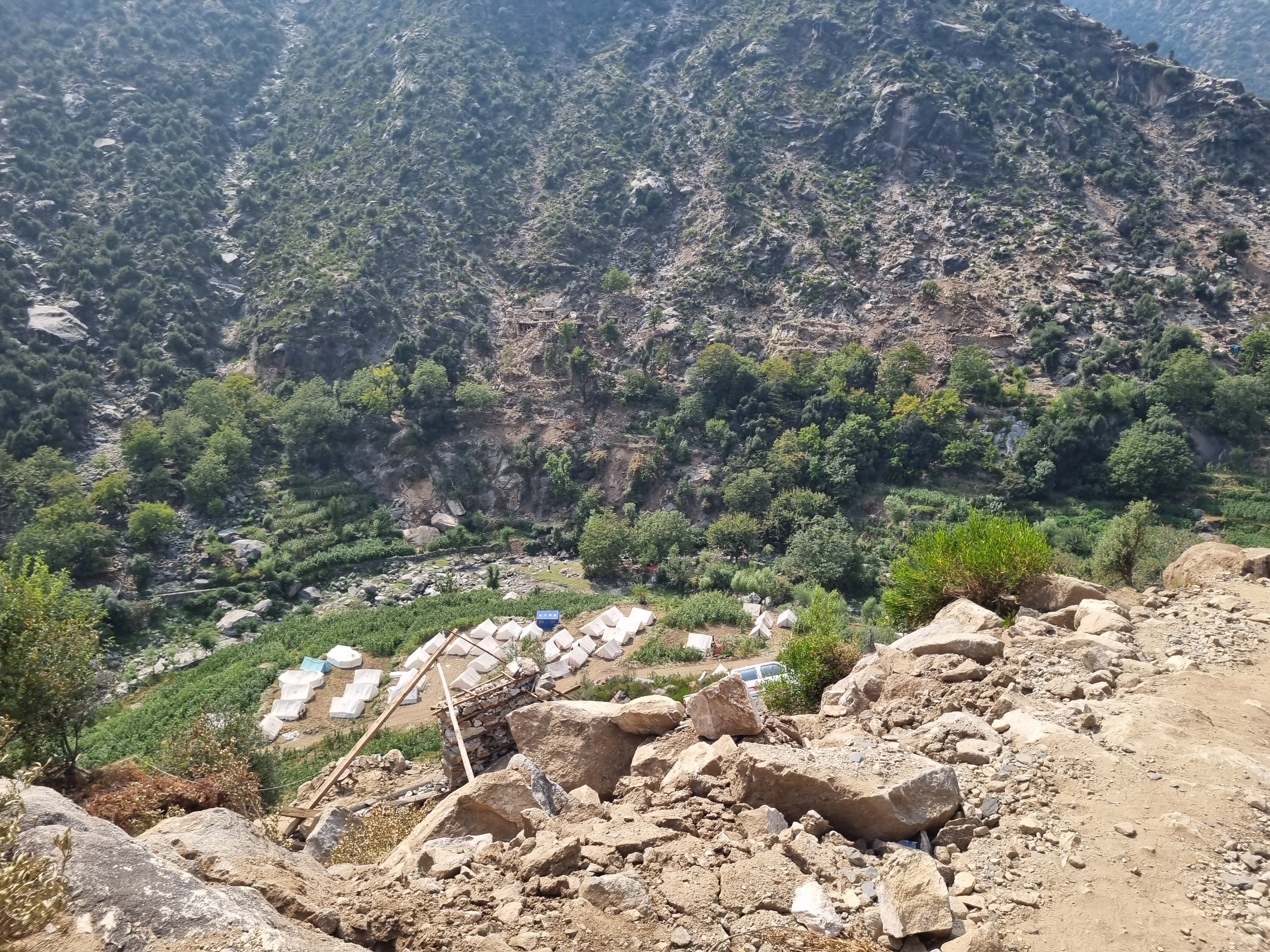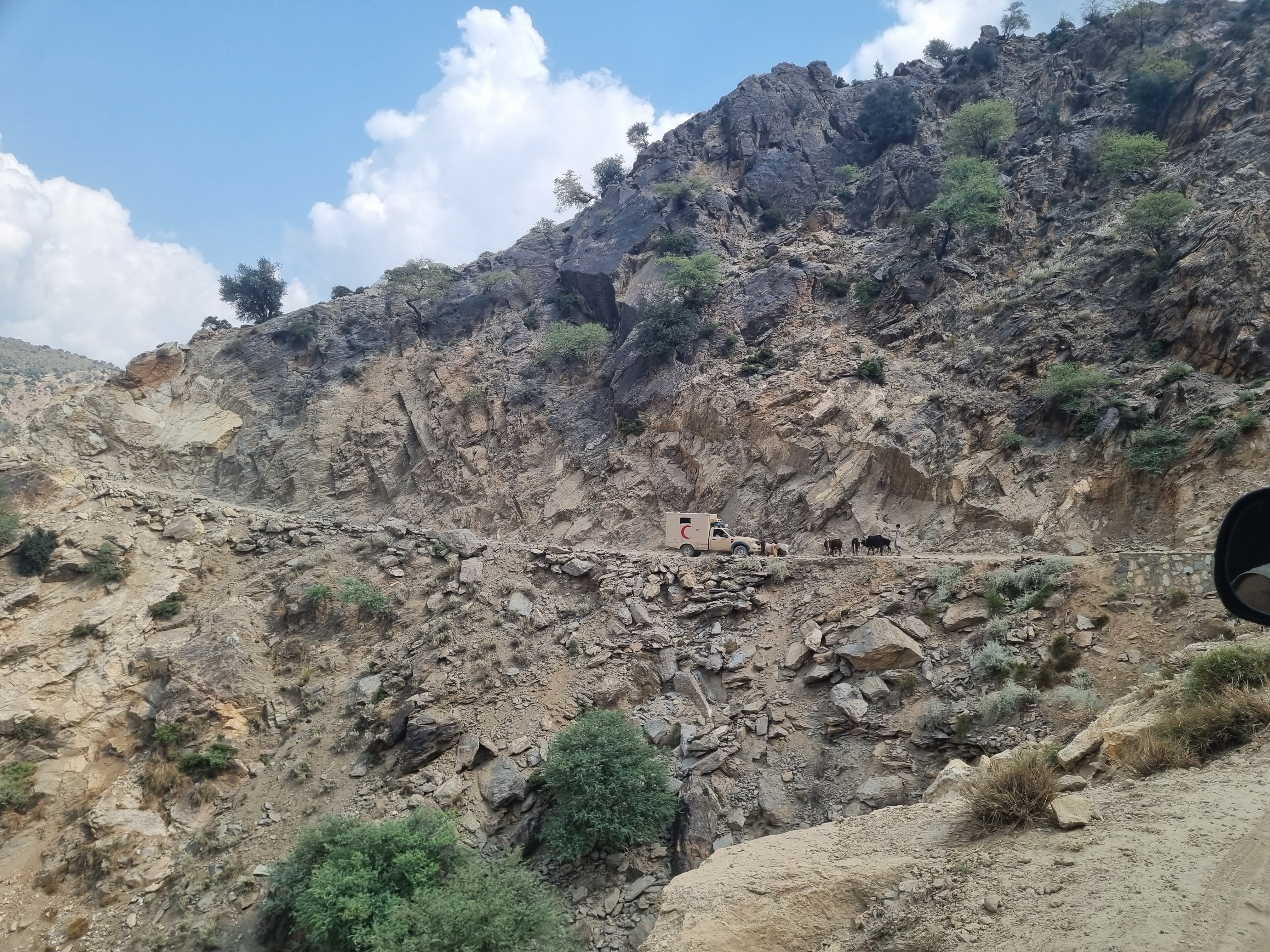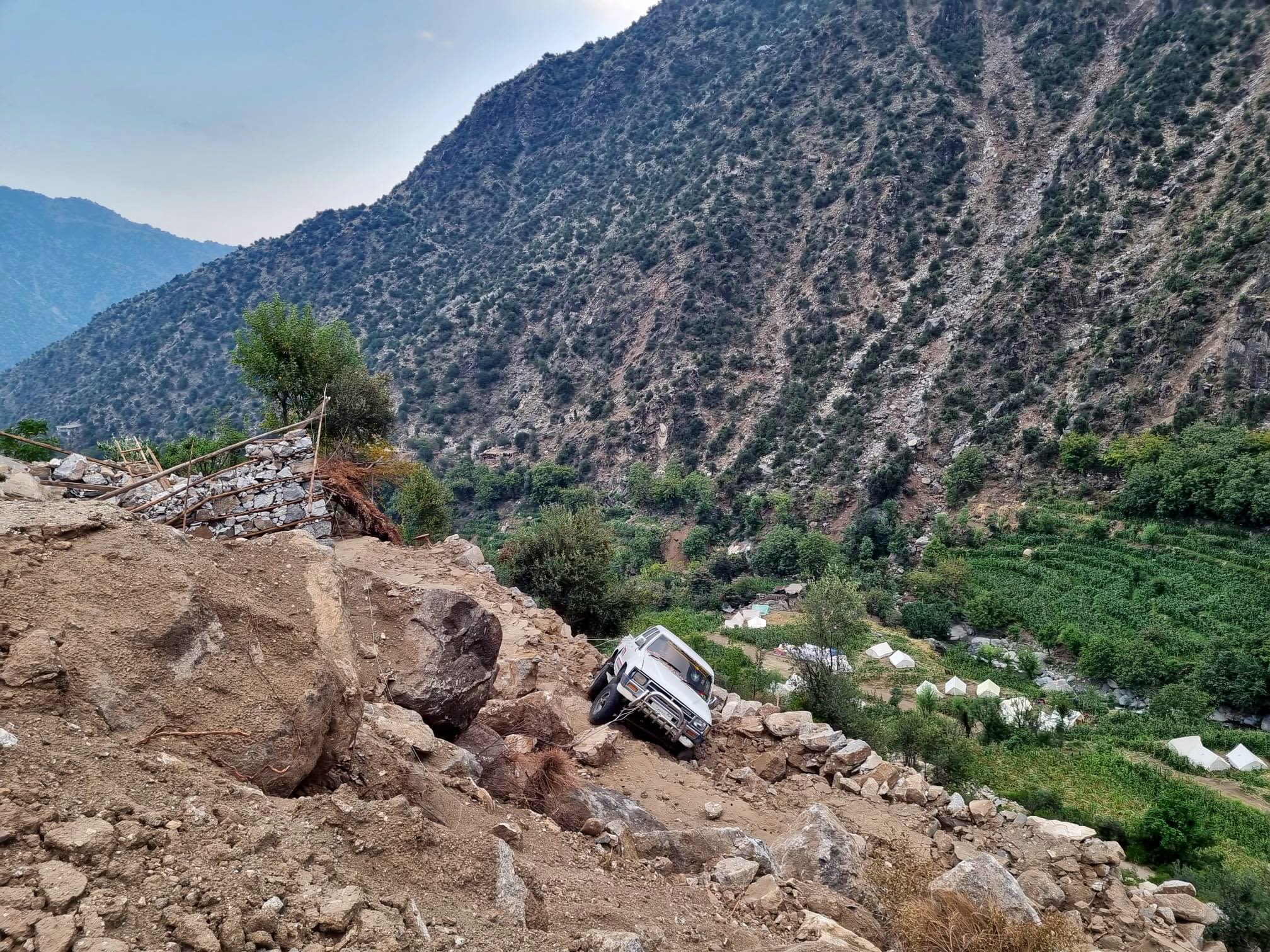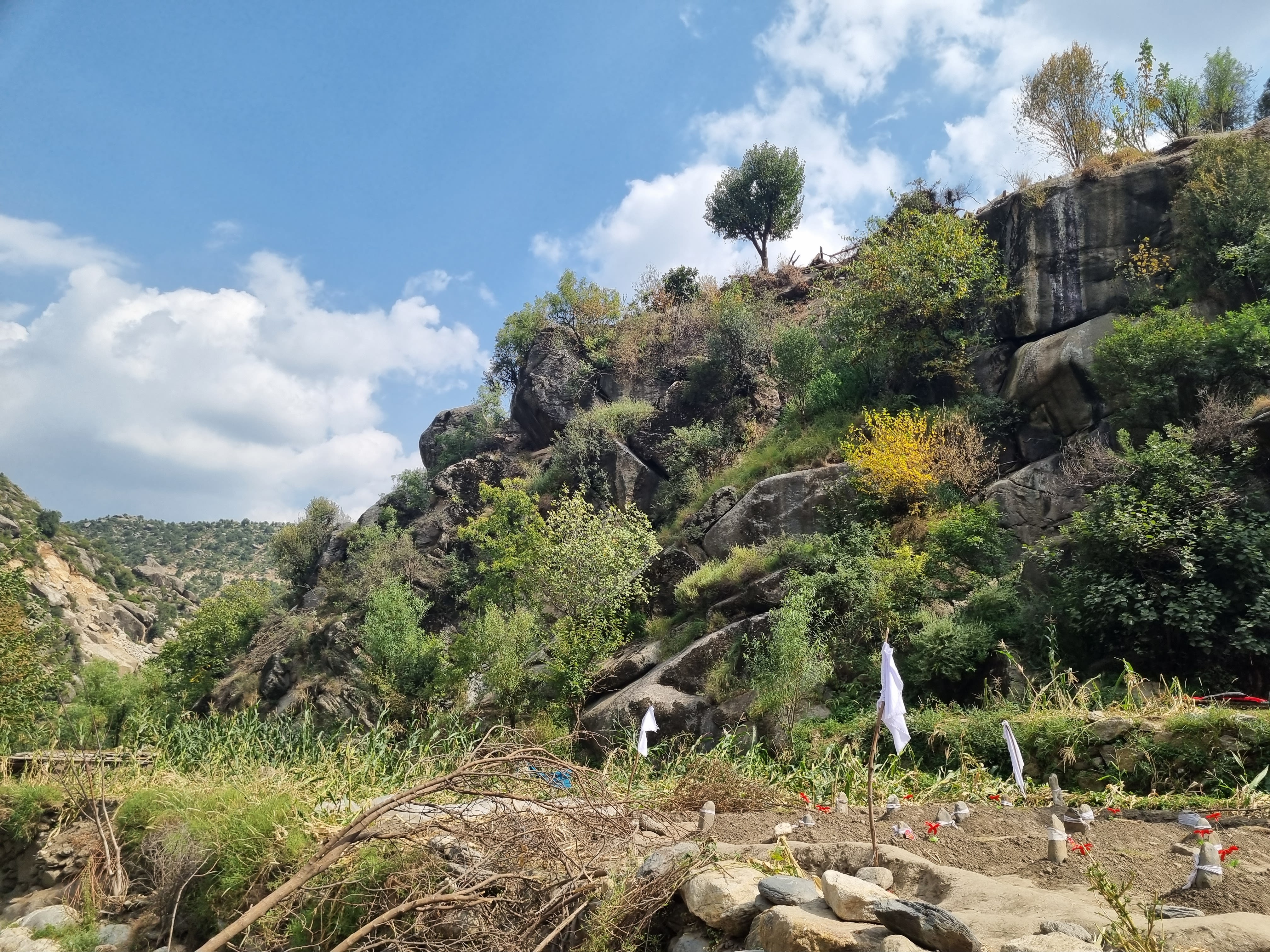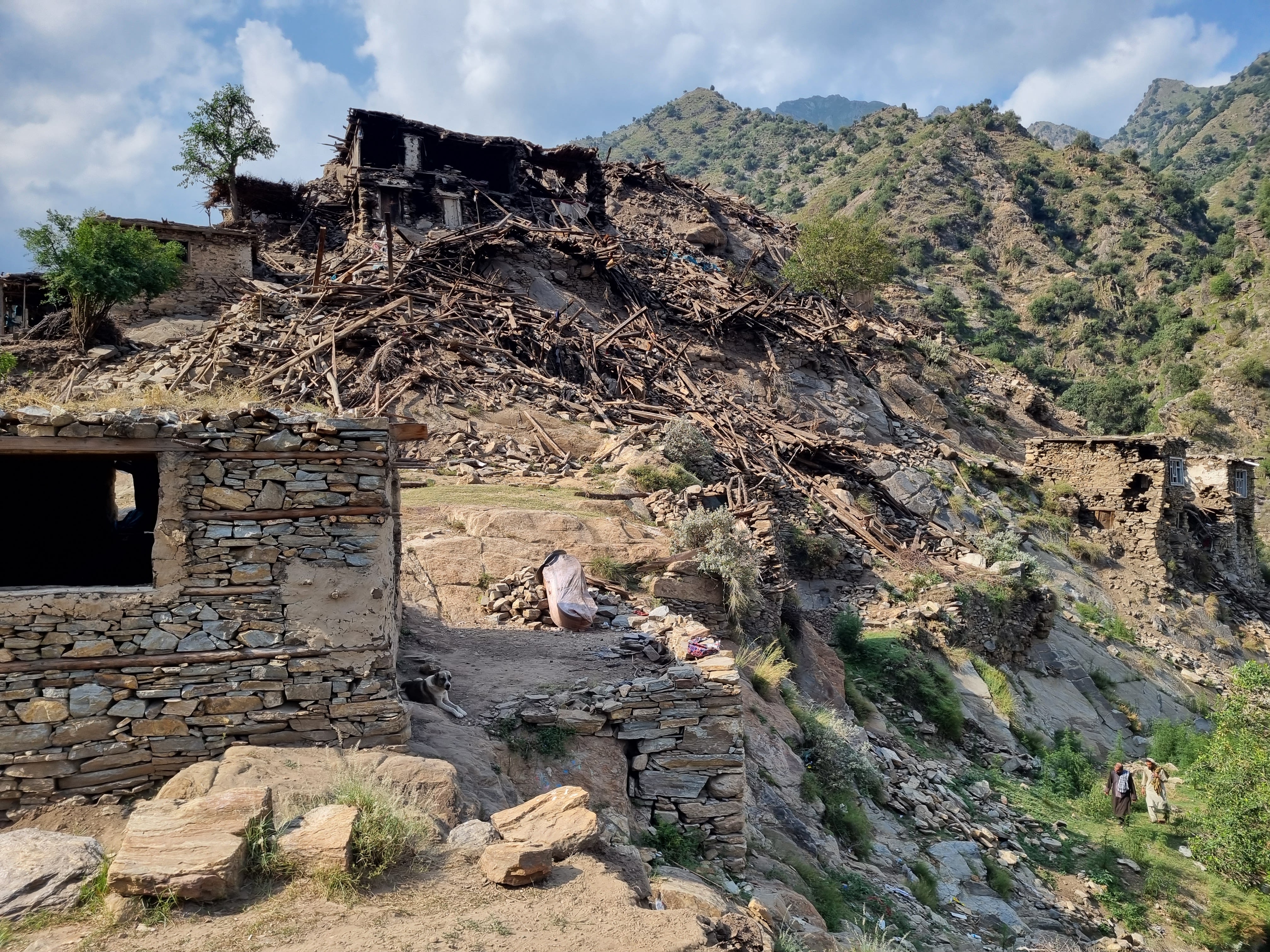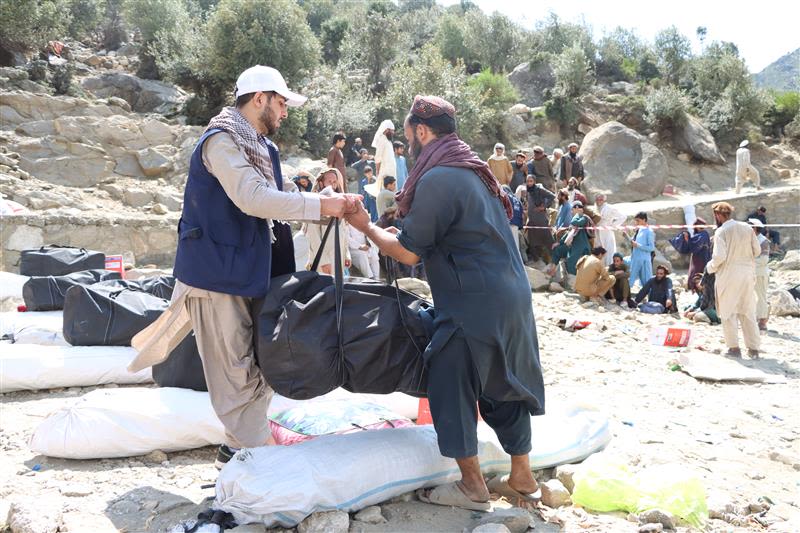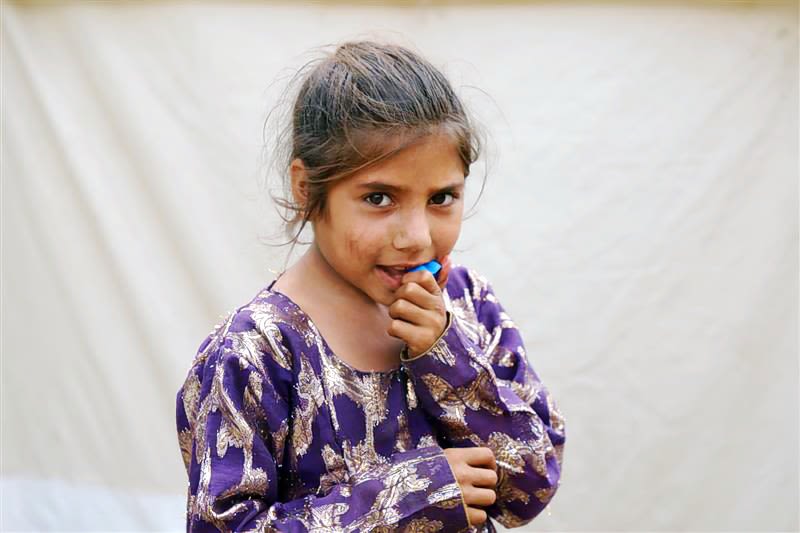Partnership on the path to recovery
A walk through World Vision's
East Afghanistan Earthquake Partnership Response
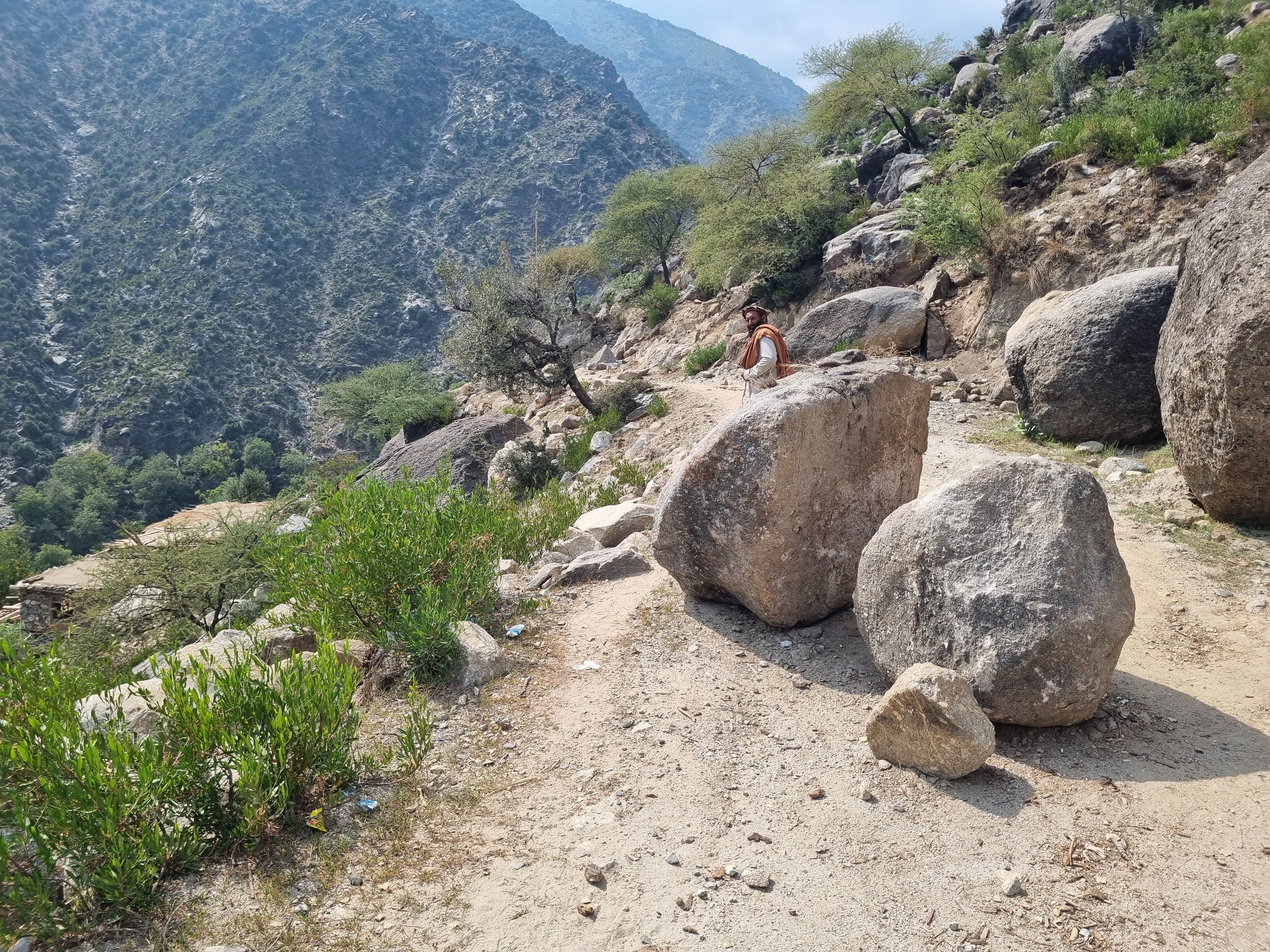
We begin our walk at Wadir, where World Vision’s partner, AWEC*, responded with meals and water within the chaotic first hours after the earthquakes. The helipad and surrounding camp is alive with activity now, two weeks later, but less chaotic: trucks offloading assistance, families preparing their day’s simple meal, a helicopter scattering dust across the tented hub as it lands with supplies. Amid it all, the pungent mingling of smoke from cooking fires, dust from cleared rubble, diesel from vehicles and sweat from those who have been working under the late summer sun.
Helicopters reaching injured people at Wadir in the first days of the response.
Helicopters reaching injured people at Wadir in the first days of the response.
From Wadir the road is impassable, so we press on by foot, climbing into the valley towards Arit, a series of hamlets spread up through the valley into the mountains.
The path is resplendent with natural beauty: fragrant air, a gently cascading river from which people and livestock drink as we pass, constant birdsong. But it is pierced by scenes of destruction: plots of crops half-buried by landslides, shattered buildings sagging against one another, and a newly created burial ground with crisp white flags and freshly turned earth.
Stricken vehicle near Wadir
Stricken vehicle near Wadir
A newly-dug burial ground between Wadir and Arit.
A newly-dug burial ground between Wadir and Arit.
Due to the lack of roads, we didn’t receive any assistance for four days. Seven people have died in our hamlet. We have lost all our belongings—our houses, livestock, and everything.
Ruqia, displaced from Arit
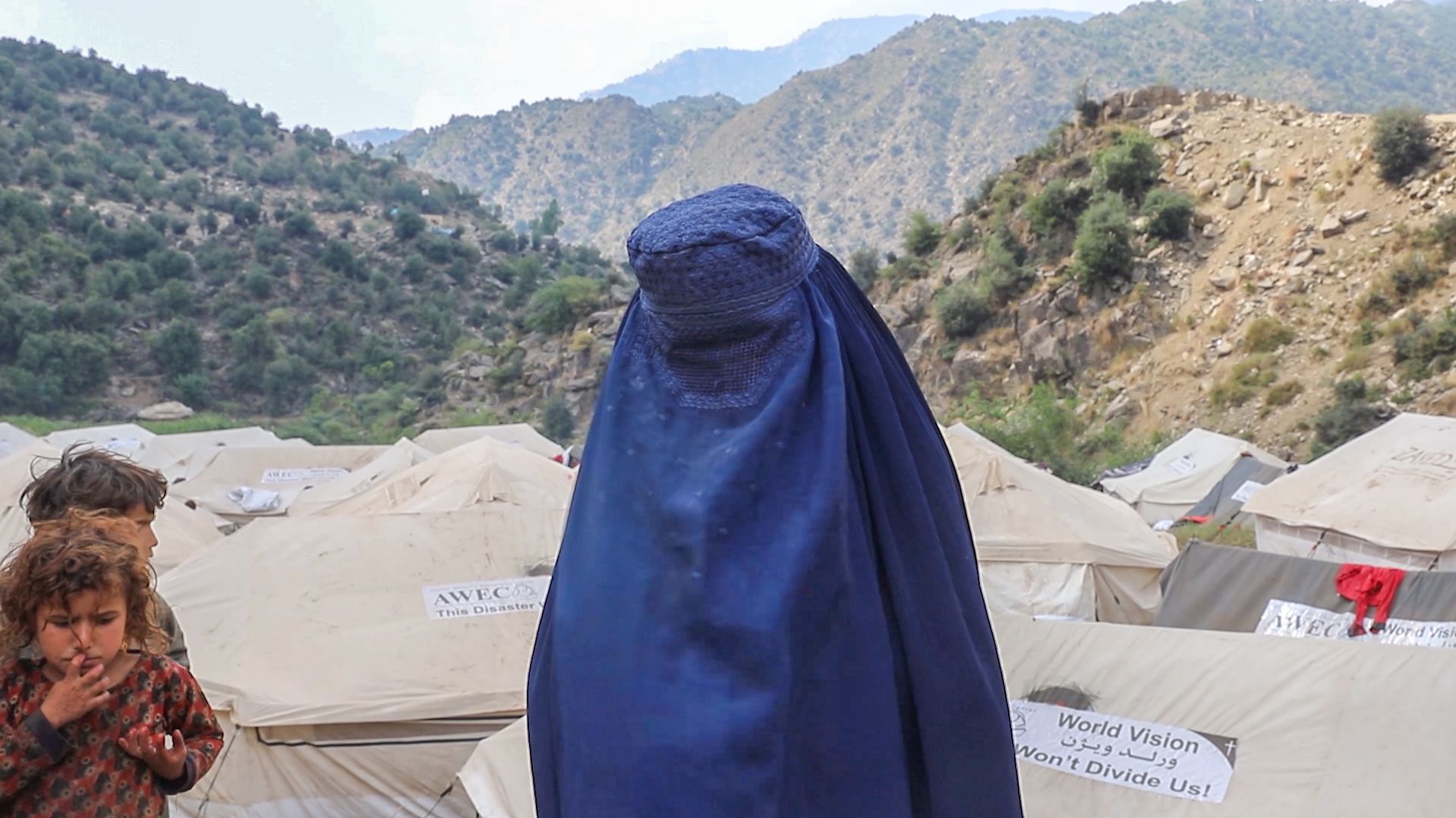
By the time we reach the first hamlet in Arit village, four kilometres later, the devastation is near total. Perched on a promontory overlooking the valley through which we’d just walked, the settlement is deserted: there is barely space to pitch a single tent and the site is far from available assistance.
Arit
Arit
Thirty-one people died in these buildings and the rest now dwell in tents provided by World Vision and AWEC in Masood village, back down the valley near Wadir. Here in Arit, instead of order and activity, a tangled heap of stone and timber; the air is heavy with the smell of decay, the quiet broken by the insistent buzz of flies, as livestock remains trapped beneath the rubble.
Walking through the rubble at Arit
Walking through the rubble at Arit
We stand silently, trying to comprehend, when our guide — who days before had been pulling the bodies of his own relatives from this same wreckage — suddenly stops. He slips through a broken window frame, vanishing into a damaged building. Moments later he returns, not carrying belongings or keepsakes, but a small bowl of corn. As if, momentarily, the agony of the past two weeks and the ruins all around him has faded from his consciousness, he scatters it across the rubble, calling softly, clucking with his tongue. A handful of chickens come running, pecking eagerly at the kernels. He crouches beside them, coaxing them to feast, a fragile gesture of care amidst desolation.
Chickens amidst the rubble at Arit.
Chickens amidst the rubble at Arit.
We need help because we are living in the open. We want our house to be built. I was studying in school before, and I want to continue my education.
Faiza, aged eight
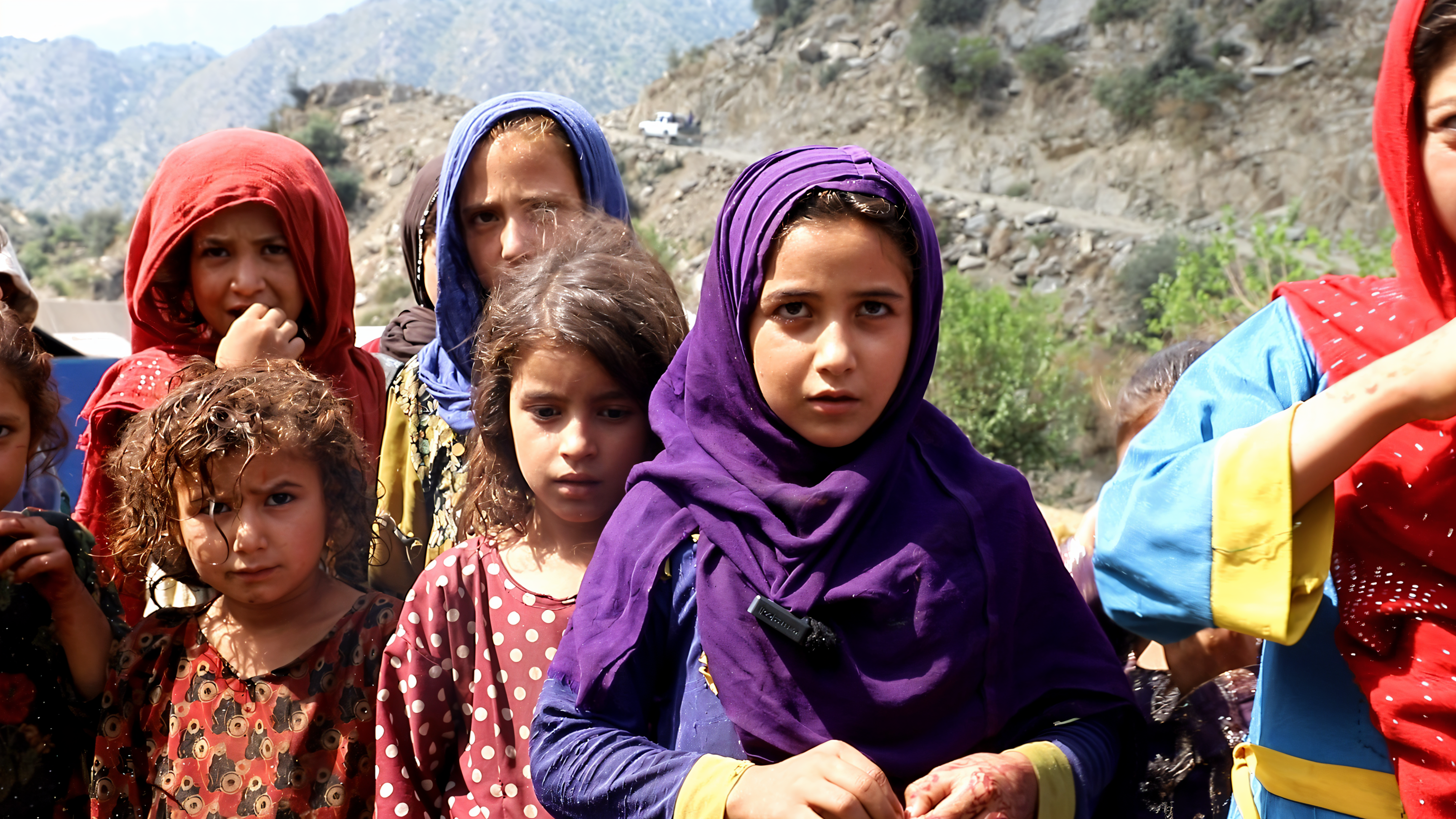
World Vision's partnership response
That small act mirrors the broader picture of endurance and care that marks this response. Returning down the valley to Wadir, men and boys pass us with shovels and building materials on their backs. The quiet yields to the thud of stones shifting, the hum of light machinery, the chatter of young children playing, some with dressed wounds, the conversation of women washing clothes in the river or bent over cooking fires. Our guide’s kin and neighbours from Arit have been welcomed by the leaders and people of Masood, themselves survivors of the earthquake. Sharing a small area of land, those who have lost homes and breadwinners are still cooking meals, still tending livestock, still finding ways to nurture what remains.
A malik (community elder) from Masood describes the impact of the earthquakes.
A malik (community elder) from Masood describes the impact of the earthquakes.
“When the earthquake happened, I was at home sleeping,” eight-year-old Faiza tells us. “We woke up and ran towards the mountain. We are from Arit village. It’s been six days since we came here. I was happy in my own village because it was our homeland, but this place belongs to others. We need help because we are living in the open field. We want our house to be built. I was studying in school before, and I want to continue my education.”
Amin Zaman, who is seven years old, adds, “Here I don’t play any games, I only pray and recite my lessons because we are sad.”
The tents and Non-Food Items (NFI) kits AWEC distributed in Masood – with blankets, lighting, utensils – have been lifelines for families from both Masood and those from Arit who arrived with nothing but the clothes on their backs. However, their minds are now turning to the winter and the mountain snowfall.
A community leader from Masood tells us, “All the houses are destroyed, and those still standing are not safe to live in. We urgently request support to rebuild homes before winter arrives. We are grateful for the tents we received, but surviving winter in tents will not be possible.”
AWEC distributing basic household essentials alongside tents to displaced people from Arit
AWEC distributing basic household essentials alongside tents to displaced people from Arit
Importantly, community members are visibly engaged in this rebuilding already: clearing rubble, helping verify needs, and ensuring no one is overlooked. Just as our guide was tending his chickens in the rubble, residents and the NGOs supporting them are already turning their attention to recovery, to sustaining the lives of those who remain. Amidst loss, grief, and uncertainty, partnership is a source of strength and the vehicle of lasting recovery.
*Afghan Women’s Education Center
Mark Calder is Advocacy, Policy and Communications Director for World Vision Afghanistan. Ria Mohammad Rehaa is Communications Manager (Partnership) for World Vision Afghanistan.
Masood, foreground, Wadir behind, Arit in the distant hills
Masood, foreground, Wadir behind, Arit in the distant hills
Displaced child in Masood
Displaced child in Masood
